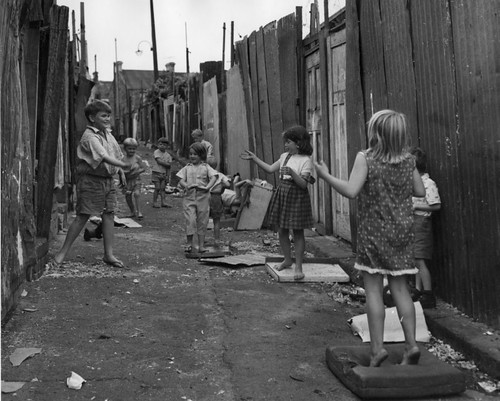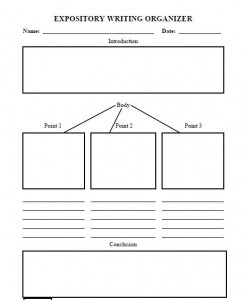Recently I spent 4 weeks with 2 different classes of Year 10 students exploring a History unit on the Great Depression in Australia in the 1930’s.That equals all the content and the skill of essay writing in 4 weeks minus 2 lessons lost to a public holiday and a Pupil Free Day.
Teaching the same unit to two different classes at the same time was really enjoyable. It allowed for reflection and improvement as well as a small dose of health competition. (“So the OTHER class has moved onto planning their assignment writing…’). As I mark the essays, that are the learning outcome for this unit, I am constantly noting and reflecting on what worked in those 3 1/2 weeks and what the students still seem to miss. How can I improve for the next time I teach this unit? How can I improve my classroom pedagogy for ANY other unit I might teach, at any year level?
Resources – I used Norman Dean online interactive content and a powerpoint of teachers notes taken from A history of Australia since 1901 (Darlington and Hospodaryk, 2003) to deliver the majority of the content. Towards the end of the writing process I also showed the students some textbook content on the IWB from Australia and the World: Thinking Historically (Calvert, Herbst, Smith, 2006) to support the previously discussed and explored content and to demonstrate what the PEEL writing structure looked like. In total, ALL students should have cited at least these 3 sources of information in their bibliography and yet many didn’t. (more on that in a minute)
- Originally I was concerned, that due to loss of lesson time and students slow to use class time, we hadn’t delved into the range of resources originally suggested in the unit outline and only really looked at two sources in any depth.
- However, on the plus side these 2 resources were comprehensive , engaging and age relevant. I’ve decided I need to go easier on myself about the range of resources (for this first time teaching the unit) and recognise that although I didn’t provide an extensive range of material, the content was on target for student learning needs.
Introduction – I wanted to go with something tangible and a bit outside the square. I started the intro lesson by counting the students off 1-3 and asking all students with a number 1 to go to the front of the room, then we discussed this represented the figure of how many people were ‘officially’ unemployed at the height of the GD., then I asked all the number 2s to sit on the floor and we then went on to discuss this represented the ‘unofficial’ unemployment rate at the height of the GD.
Next time I would also look to find an engaging 5min youtube clip to hook the students into the topic and generate discussion.
Teaching ESSAY WRITING – This section of the T&L design seemed strong and the lesson flowed well. I used chalk and talk because I wanted all students to draw the outline structure into their books for themselves – I DIDN’T want them to have a handout, I wanted them to have the opportunity to reflect and consider the writing process ahead of them as they drew up the outline and broke down the essay into it’s components and purpose.
I’m guessing the ‘A-HA’ moment for students was about 60-70% from each of the two classes.
Almost without exception, the students who said they didn’t understand what they had to do, when it came to the writing process, were those students who had NOT drawn the graphic organiser for essay structure into their books.
The area that still needs attention is helping students with the self-confidence and positive mindset approach to JUST DO IT! (This topic warrants its own post…but not here, today.)
Writing Process – This wasn’t successful in my opinion. I’m not sure I have the answer to my unrest about how lessons are used, or not used, by students to complete their assessment tasks. From this experience I know what is going wrong, but I’m still undecided about how I can address these issues and improve student engagement and productivity in future opportunities.
What went wrong – 20% of students in each class used class time productively, 80% achieved very little to nothing and used the time to chat and catch up on social happenings.This became VERY evident when looking at the Bibliography for each essay. It was clear who had used the lessons allocated to writing the essay as they had taken note of the 5 minute demonstration on how to format a bibliography in the Harvard style and had listed at least the two main sources from our unit of study in class. Those who used the class time to chat, then went home and completed their essay by themselves and more pften than not relied upon sources such as wikipedia (NOT a crime – but a little red flag never-the-less) or American History websites about the Depression. (serious concern)
Too many of my interactions with students were asking students to refocus on the task, not engaging in Q&A about the task.
What I WAS pleased with – there were many good one-on-one discussions about the topic and the writing process and from these discussions I believe students benefited and their work reflects their application of learning from these discussions.
FOR NEXT TIME:
YES- students need to learn about the Great Depression in Australia in the 1930’s. HOWEVER – from observations around the classroom and reflection on the 3 weeks of teaching and learning I believe the greater need (for this unit) is around the skill of historical essay writing and the basic learning skill of note taking. I would shift the focus next time to the resources and HOW to use them for learning and citing in the writing process. I need to spend at least one lesson explicitly teaching and modelling note taking and make this process a daily non-negotiable expectation.
For the Writing Process – I would split the double lessons into 1 lesson of note taking/group work and 1 lesson of silent writing. I would also set a date for draft feedback – too many students had excuses and avoided demonstrating their work in progress.
I need to improve daily feedback from students to teacher and between students. I would implement an exit slip format for receiving feedback each lesson. I would also develop a IWB pop quiz to use as revision at the start of each lesson.


Exit slips are great… I have to remind myself though that they’re a snapshot that I can read quickly to get a feel for what issues/commonalities/progress exist rather than an in depth response that requires huge analysis. It’s a fine line though – I admit that earlier today i found a pile of exit slips from LAST YEAR that I can’t remember ever reading. Oops.